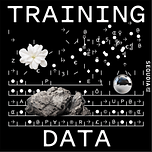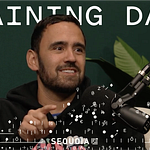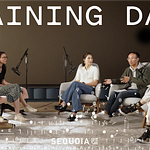In a recent interview, Max Jaderberg, Chief AI Officer at Isomorphic Labs, shared his ambitious vision for transforming drug discovery through artificial intelligence. Spun out of DeepMind in 2021, Isomorphic Labs is tackling one of humanity's greatest challenges: reimagining drug discovery to solve disease at scale.
The Scale of the Challenge
Jaderberg emphasizes the immense complexity of drug discovery, noting that the potential chemical space for drug-like molecules is at least 10^40 – a number so vast that even with the best predictive models, traditional methods can only scratch the surface. "Even if you had the best predictive models in the world and could screen a billion different molecules, that's still only 10^9," he explains. "We're still leaving 10^31 molecules left on the table."
This is why Isomorphic is building not just predictive models but also generative models and AI agents that can intelligently navigate this enormous chemical space – similar to how AlphaGo navigated the vast possibility space of the game Go.
JUMP TO: The Scale of the Challenge
AlphaFold 3: A Breakthrough Achievement
Last May, Isomorphic Labs and Google DeepMind released AlphaFold 3, a significant expansion of the Nobel Prize-winning AlphaFold technology. While AlphaFold 2 could predict protein structures, AlphaFold 3 can model the structure and interactions of all types of biomolecules – proteins, DNA, RNA, and small molecule drugs.
This breakthrough allows scientists to visualize at atomic resolution how potential drugs might interact with their targets, accelerating the design process from months or years to mere seconds. As Jaderberg explains, "Our drug designers have, literally, a laptop browser-based interface being able to understand, make changes to their designs and see the impact of that."
Beyond AlphaFold: The Next Frontier
But Jaderberg makes it clear that AlphaFold is just the beginning. "We need like half a dozen AlphaFolds," he states, referring to the need for several more breakthrough AI models that can predict different aspects of biology and chemistry at experimental-level accuracy.
The ultimate goal is what Jaderberg calls "a holy grail model for drug design" – a system that combines predictive models with generative capabilities and intelligent search to explore the vast space of possible molecules and find those with the best therapeutic potential.
Move 37 for Drug Discovery
When asked what a "GPT-3 moment" would look like in AI biology, Jaderberg offered a fascinating perspective. Rather than just generating human-like outputs, he envisions something more akin to AlphaGo's famous "Move 37" – when the AI made a move so creative and unexpected that it stunned human experts.
"We're starting to see that internally with our generative models," Jaderberg reveals. "We're creating designs that a human drug designer would say, 'Hmm, I'm not so sure about that.' And then you test it out in physical reality, and the generative model is correct and the human is wrong."
This vision of AI surpassing human intuition in drug design, while working alongside human scientists, points to a future where diseases once considered untreatable may finally have solutions – designed not by humans alone, but through a partnership between human creativity and artificial intelligence.
JUMP TO: Move 37 for Drug Discovery
Hosted by Stephanie Zhan
Mentioned in this episode:
Playing Atari with Deep Reinforcement Learning: Seminal 2013 paper on Reinforcement Learning
Capture the Flag: 2019 DeepMind paper on the emergence of cooperative agents
AlphaStar: 2019 DeepMind paper on attaining grandmaster level in StarCraft II using multi-agent RL
AlphaFold Server: Web interface for AlphaFold 3 model for non-commercial academic use










